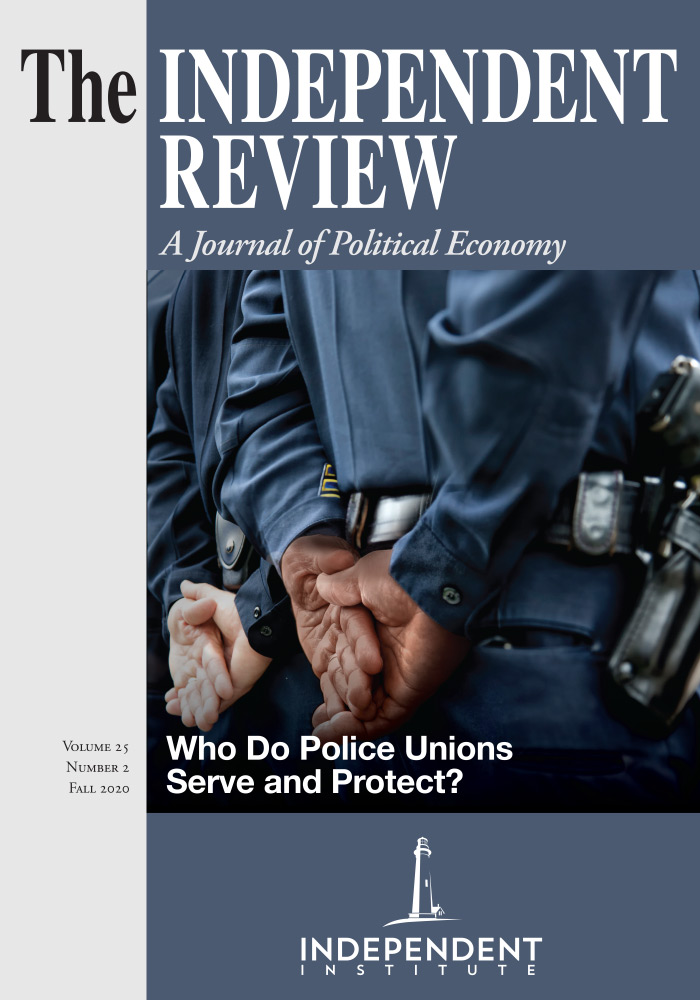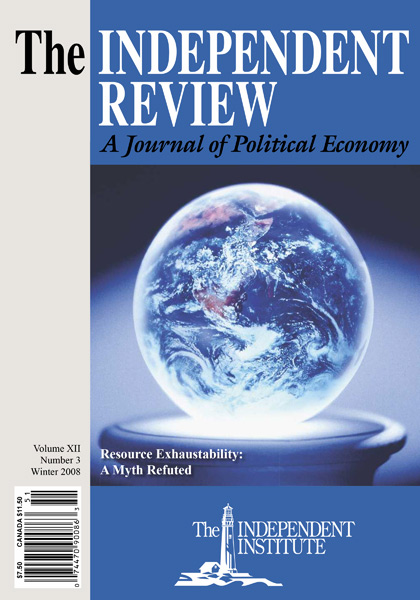Using insights from Adam Smith’s Theory of Moral Sentiments, Vernon Smith and Bart Wilson’s 2019 book Humanomics introduced a model of human behavior that reconciles laboratory findings of self-interested behavior in market-like settings with high levels of trust and cooperation in personal, social-exchange games. This symposium brings together four contributions that apply the humanomics model to an array of issues.
Article
Evidence from laboratory experiments starting in the 1980s seemed to produce conflicting accounts of what a reasonable set of assumptions about human behavior might look like. On the one hand, people were behaving with greater levels of trust and cooperation in personal, social-exchange games, even when they were anonymously paired. On the other hand, when subjects interacted in laboratory settings replicating market institutions, they behaved as narrowly selfinterested as the Max-U model had predicted. This seeming contradiction was difficult to reconcile with neoclassical economic theory, which predicted market failure under anything but conditions of perfect competition, as well as with theories of collective action, which predicted coordination failure for social exchange.
Vernon Smith and Bart Wilson’s 2019 book, Humanomics, introduces a model of human behavior that reconciles these laboratory findings using insights from Adam Smith’s Theory of Moral Sentiments. In that eighteenth-century account, human actors are irreducibly social in their behavior: they have fellow feeling, they judge the sentiments and passions of each other, and they experience gratitude and resentment, which prompt them to reward and punish each other. In the process of interacting with others, these humanomics agents seek to act in a manner that is praiseworthy and to avoid action that is blameworthy. As a result, they discover rules of social interaction they begin to follow. Among other things, this model explains why individuals in a laboratory environment with near anonymity might still act against their narrowly defined self-interest and in line with their expectations for socially praiseworthy behavior. Smith and Wilson suggest that an economic analysis based on Adam Smith’s Sentiments model can perform better than one based on a narrow conception of homo economicus.
This symposium brings together four contributions that integrate Smith and Wilson’s model with existing economic theories and evidence. Starting out, Colin O’Reilly shows that Community-Based Land Adjudication and Registration programs in postconflict Afghanistan and the Gacaca courts in postwar Rwanda protected property rights and provided effective dispute resolution when similar formal mechanisms were failing. O’Reilly connects this literature on postconflict governance to Smith and Wilson’s humanomics model. He argues that a model of human action that accounts for moral sentiments can better explain the relative success of informal and customary governance institutions in postconflict environments. While formal institutions are favored by the international development community as well as by national governments, they are usually slow to resolve disputes and often fail to provide effective governance, especially after a conflict, because they do not tap into the existing structure of informal norms and customs on the ground. Informal institutions, which emerge from the ground up, can often do a better job building on customary institutions and the local consensus among various groups. O’Reilly concludes that in both Afghanistan and Rwanda, “the reemergence and recognition of customary governance improved the performance of institutions and led to better outcomes than formal alternatives did.”
Next, Doug Rasmussen connects the insights from Smith and Wilson’s model with a conception of human action based on the action axiom (purposeful action). He argues that the assumption that human behavior is purposeful provides a “viable and powerful” alternative to the constructivist account of human behavior from the vantage point of homo economicus. He argues that while homo economicus represents an insufficient and overly simplistic assumption, especially when it focuses narrowly on utility, economizing action is not precluded from the analysis when one assumes purposeful human behavior. Homo agens paired with homo moralis “can replace homo economicus as a foundation for economic thinking.” In Rasmussen’s neo-Thomist conception of human behavior, homo agens “notes the formal implications of what is involved when a human being employs means in attaining an end, and homo moralis considers whether the means employed and the ends sought are genuinely good for a human being.” Rasmussen’s discussion linking humanomics and neo-Thomism has clear implications for political and economic freedom: because human flourishing is “agent-relative or personal,” individual liberty is a prerequisite for its achievement.
Michael D. Thomas then uses the humanomics lens to analyze private charity and specifically the effective altruism (EA) movement, which advocates the use of reason and evidence to improve the effectiveness of charity. He suggests that while EA can help overcome problems associated with the extreme near-sightedness (myopia) of some charitable giving, it is prone to falling prey to problems associated with extreme far-sightedness (hyperopia) when it fails to account for the moral sentiments (humanomics) and local knowledge of the recipients of charity. Thomas discusses the problem of cognitive capture associated with expert-led charity, which purports to identify global priorities to improve effectiveness while ignoring recipient circumstances. He poignantly identifies such far-sighted charity as effective self-interest and suggests that altruism is a misnomer when EA models abstract from recipient concerns.
Finally, Daniel J. D’Amico explains how the humanomics approach justifies his call to discard the conventional social science dichotomy of markets and states in favor of a new terminology informed by Richard Cornuelle’s independent sector. D’Amico argues that “human cognition, moral empathy, and social psychology all seem better suited to small intimate group settings” than to large bureaucracies, which supports the idea that analysis informed by the humanomics model focusing on the independent sector can offer better insights into social organization and problem solving. He suggests further that by focusing on organizational independence, Cornuelle’s model avoids some of the conceptual challenges of the entanglements between politics and markets while at the same time renewing a classical liberal appreciation for voluntary as opposed to coercive arrangements. He also proposes organizational independence as a yardstick that would lend itself to quantifiable measurement and analysis. D’Amico offers the U.S. education system as an example of what analysis focused on organizational independence might look like.
Overall, the contributions in this symposium suggest that existing work in Austrian economics and the self-governance literature line up well with Smith and Wilson’s humanomics model and that a consistent application of sentiments can provide both a deeper foundation for some of the work in institutional and development economics while at the same time offering illuminating insight into potential areas for future research.
References
Smith, Adam. (1759) 1982. The Theory of Moral Sentiments. Indianapolis: Liberty Fund.
Smith, Vernon L., and Bart J. Wilson. 2019. Humanomics: Moral Sentiments and the Wealth of Nations for the Twenty-First Century. Cambridge: Cambridge University Press.
| Other Independent Review articles by Diana W. Thomas | ||
| Fall 2024 | Hannah’s Children: The Women Quietly Defying the Birth Dearth | |
| Spring 2024 | The Power of Hope: How the Science of Well-Being Can Save Us from Despair | |
| Spring 2024 | The Human Prosperity Project: Essays on Socialism and Free Market Capitalism from the Hoover Institution | |
| [View All (7)] | ||




















